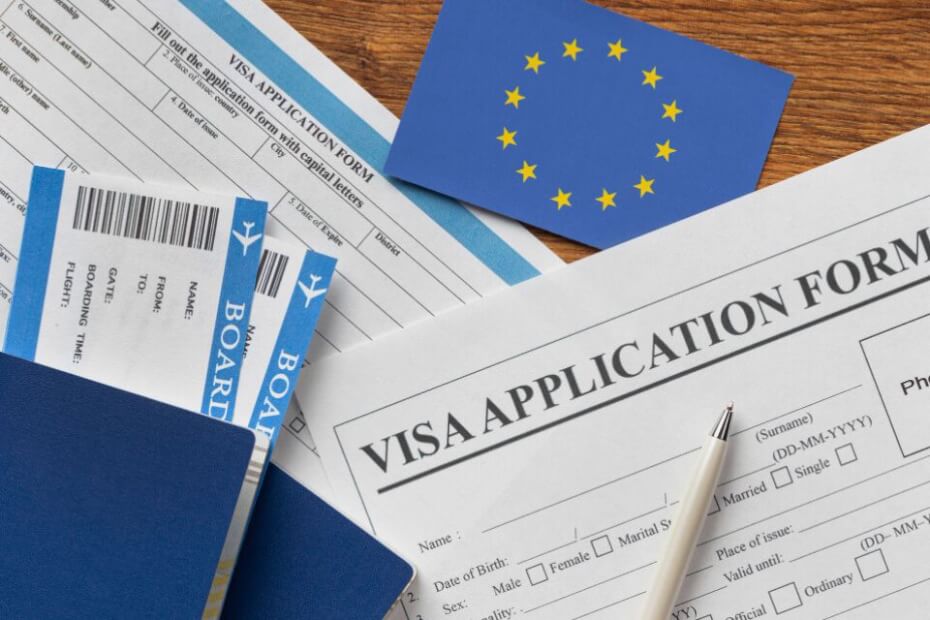
Travelers applying for a Schengen visa must pay higher fees starting next month.
A Schengen visa is a short-stay permit allowing travel within the Schengen area for up to 90 days within 180 days.
The Schengen Zone includes 26 member states of the European Union (EU) and four neighboring countries Switzerland, Norway, Iceland, and Liechtenstein that have abolished internal border controls.
The European Commission has adopted the proposal for a Schengen visa fee increase by 12 percent.
According to the Slovenian Ministry of Foreign and European Affairs, “The increase will apply worldwide as of June 11, 2024.”
As the draft proposal indicated, the new Schengen visa fees will be €90 for adults and €45 for children aged six to 12.
For countries that are uncooperative in receiving expelled citizens back from Member States, the new visa fees will be €135 or €180.
Before the visa fee hike in June, a Schengen visa cost €80 and €40 for adults and children, respectively.
For re-entry of individuals expelled from Member States, the previous fees were €120 or €160.
The Schengen visa fee increase results from a routine review of the EU’s visa fees every three years.
During the most recent review in December 2023, the visa fee hike received an “overwhelming majority” support.
The Commission cited the increased inflation rates and civil servant salaries in the Member States as the reasons for the visa fee hike.
The EU last increased Schengen visa fees in February 2020, when application filing costs increased from €60 to €80.
It has not announced the date for the visa fee increase. However, the Commission is expected to publish it in its official journal by the end of the week.
IATA warns higher visa fees may deter tourism
The Schengen visa fee increase proposal was met with disapproval from many different parties.
“None of the comments received were in favor of an increase of the fees,” the EU Commission’s proposal noted.
Many comments argued that the high cost of living and inflation might hinder travel and deter people-to-people contacts.
The International Air Transport Association (IATA) released a report on the impact of increased visa fees on travel.
“This revision may discourage tourists from choosing Schengen destinations,” the IATA feedback read.
It added that it may negatively impact EU tourism “especially when other places do not require visas or offer more cost-effective options.”
The visa fee hike would make travel to the Schengen Zone less affordable and could have a ripple effect on local economies.
Other comments on the proposal cited “perceived poor quality of visa services.”
These include difficulties obtaining appointments, inconsistent practices between Member States, and a lack of transparency.
Some respondents also criticized the role of external service providers, which were included in the proposed Schengen visa fee increase.
Aligning new visa fees with Schengen visa digitalization
In its feedback, the IATA also encouraged the EU to align visa fees with the bloc’s digitalization plans.
The European Commission is working towards digitizing Schengen visa applications in 2026.
A digital Schengen visa will be a printable 2D barcode digitally signed by the issuing country’s Certificate Authority.
It will contain the visa holder’s face, personal information, issuing country, relevant details, and visa conditions, if applicable.
In December 2023, the EU adopted new rules to allow online applications for Schengen visas.
According to the new policy, the new Schengen visa online platform is the European Union Visa Application Platform or EU VAP.
With the EU VAP, in-person appointments will no longer be necessary except for a few exemptions.
Only first-time applicants, individuals with invalid biometric data, and those with new travel documents must visit consulates or visa centers.
Applicants will be able to complete their applications, answer travel-related questions, and upload the required documents on the platform.
They can also pay for Schengen visa fees online through an EU VAP-linked gateway but still have the option to pay at visa officers.
The platform will automatically forward applications and payments to relevant member countries.
Moving towards a visa-free system
The IATA also urged the EU to strive for the most visa-free system possible.
This can be achieved by using visa facilitation technologies, said the trade association for the world’s airlines.
By mid-2025, the EU will launch the European Travel Information and Authorization System (ETIAS).
It is not a visa but an electronic travel permit for travelers who can visit the Schengen zone without a visa.
It will work similarly to the United States Electronic System for Travel Authorization (ESTA) and the United Kingdom’s Electronic Travel Authorization (ETA).
The EU will also introduce a new biometric border control system, the Entry/Exit System (EES), later in the year.
The EES will record the entry and exit of short-stay Schengen visa holders and non-visa nationals through facial or fingerprint scans.

